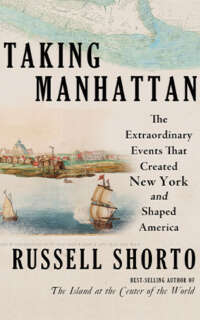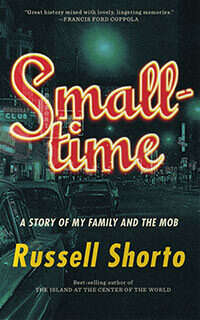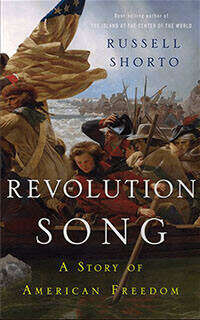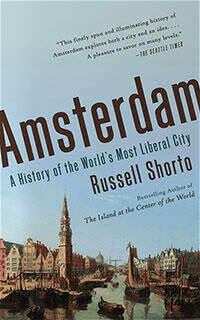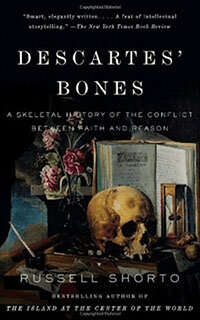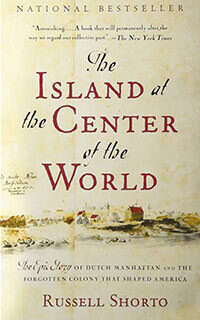The Streets Where History Lives
The New York Times
by Russell Shorto
February 09, 2004
Acre for acre, Lower Manhattan may be the most historic piece of real estate in America. Here the Sons of Liberty plotted revolution, the Stamp Act Congress met to defy taxation without representation, colonists exchanged fire with British ships in the harbor, and General Washington and his officers celebrated their victory. The first president was inaugurated here, and Congress, meeting at Federal Hall, wrote the Bill of Rights. In one remarkable moment in time, Washington, Jefferson, Madison and Hamilton all lived and worked in these narrow streets. For two centuries, this tiny quadrant was New York — and the gateway to America for millions of immigrants.
It was also, of course, the site of the World Trade Center. Both the building of the twin towers and their destruction flow from that deep history, for the events that occurred here contributed not only to the nation’s growth but to the rise in might of New York as global capital and lower-case world trade center.
It would seem natural, then, to connect the site to its past. But neither the winning design for the World Trade Center memorial nor any of the public conversation or press attention surrounding it have attempted to do so. A sense of history has been absent from the whole process.
Maybe that shouldn’t be a surprise. The fact is, Lower Manhattan — which after all is America’s financial capital, and has business to do — has never had the reflective, carefully tended atmosphere of Boston’s historic center, Philadelphia’s Independence Hall, or the memorials in Washington. Monuments that anywhere else would serve as a city’s cherished heart are lost in the Wall Street shuffle. Many historic events that took place here don’t even rate a plaque. Over the past three years, while working on a book about Manhattan’s founding, I spent a lot of time in and around the historic sites of Lower Manhattan, and routinely encountered clusters of tourists zigzagging haphazardly through the area, guidebooks in hand, knowing that they were walking streets redolent of the past but having a hard time sniffing it out.
The reason for the city’s offhand approach to its most elemental history goes all the way back to the beginning, and has to do with New York’s unique development. While the colonies to the north and south were English, the population of New York, dating from its beginnings as the Dutch city of New Amsterdam, was mixed, “foreign.” For all New York’s power, the Brahmins in Boston and the planters of Virginia kept it at arm’s length. New York’s image of itself has always reflected this. From early on, the city ceded patriotic sentiment to others and put its energy into the present. New York, the feeling goes, is too big, too chaotic, too jazzed and hustling and busy to turn itself into a museum.
Fair enough, but the new World Trade Center memorial deserves context, and if some of the energy devoted to it were extended beyond the footprint of the site it could also help correct a long tradition of neglect. So here’s a thought. In Boston, a simple red brick path runs for 2.5 miles through the heart of the city, connecting 16 of its Revolutionary sites, ending at Bunker Hill. This Freedom Trail, with plaques along the way, is trod by an estimated three million people per year. This humble linking device is the spine of the city’s tourism industry, and it does what every book, museum or memorial should do: frames and makes meaningful.
Imagine a similar path (maybe paved in the sort of yellow bricks out of which New Amsterdam was built) that starts at Battery Park. It might begin with a plaque directing the viewer to the harbor into which Henry Hudson’s little wooden ship first sailed in 1609 (oddly enough, the date was Sept. 11), setting everything in motion. Visitors’ attention would then be directed straight ahead, to Governors Island, New York’s Plymouth Rock, the initial site of European settlement (until Peter Minuit, in one of history’s shrewder judgment calls, shifted the operation to Manhattan). If this island represents the latent promise of the New World, the other two visible islands — Liberty and Ellis — represent its fulfillment.
The path could then head northward along Pearl Street, plunging into a warren of streets that are now mostly devoid of historical markers. Nonetheless, this street pattern is a nearly perfectly preserved artifact of the city of New Amsterdam. Here, all but forgotten, the Dutch forged America’s first melting pot society, based on tolerance and free trade, laying the foundation for the great city that was to come. As the path continued from here, a smart selection from among the dozens of sites in the area would have to be made. Certainly Federal Hall, the New York Stock Exchange, Fraunces Tavern and Trinity Church would be on the list. And what about a marker for the Wickquasgeck Trail, the Indian path that ran the length of the island, which the Dutch made into their main highway and the English renamed Broadway? Or the site of the mansion where Captain Kidd made his home, to represent Wall Street’s more literally piratical days? For that matter, the location of the famed buttonwood tree on Wall Street under which, in 1791, men of business first met to trade shares of stock surely merits a spot on the tour as well.
Some of these sites have markers now, but the area cries out for definition, and a guiding hand. Boston’s historic trail has its own foundation, which tends the trail and the history it presents. The Downtown Alliance has the makings of something similar in the network of walking tours it offers; what’s needed is a unifying principle. What if this marked route told a story, so that, in the course of an hour or two, a visitor would get a chance to live vicariously the saga of the place, to envision the rolling casts of characters — Rembrandtesque chapeaux giving way to powdered wigs, Union Army blues, Jazz Age spats — who made a new society flourish and made the tall buildings grow.
It could all culminate at the World Trade Center memorial, with a final marker poised between the two reflecting pools that will occupy the spots where the towers once stood. One of the most striking things about the design selected for the memorial is its name — Reflecting Absence — which at present has an unintended meaning. With so much attention being devoted to a memorial to loss and absence, many things of historical substance that occurred here go overlooked. As the enormous interest in the site itself suggests, history doesn’t exist only in the books in which it is recorded but in the places where it was lived. Connecting the World Trade Center memorial to the past would add to its emotional power, helping us to see those who died there as players in a long, continuing saga. That would truly be reflecting something.
#
